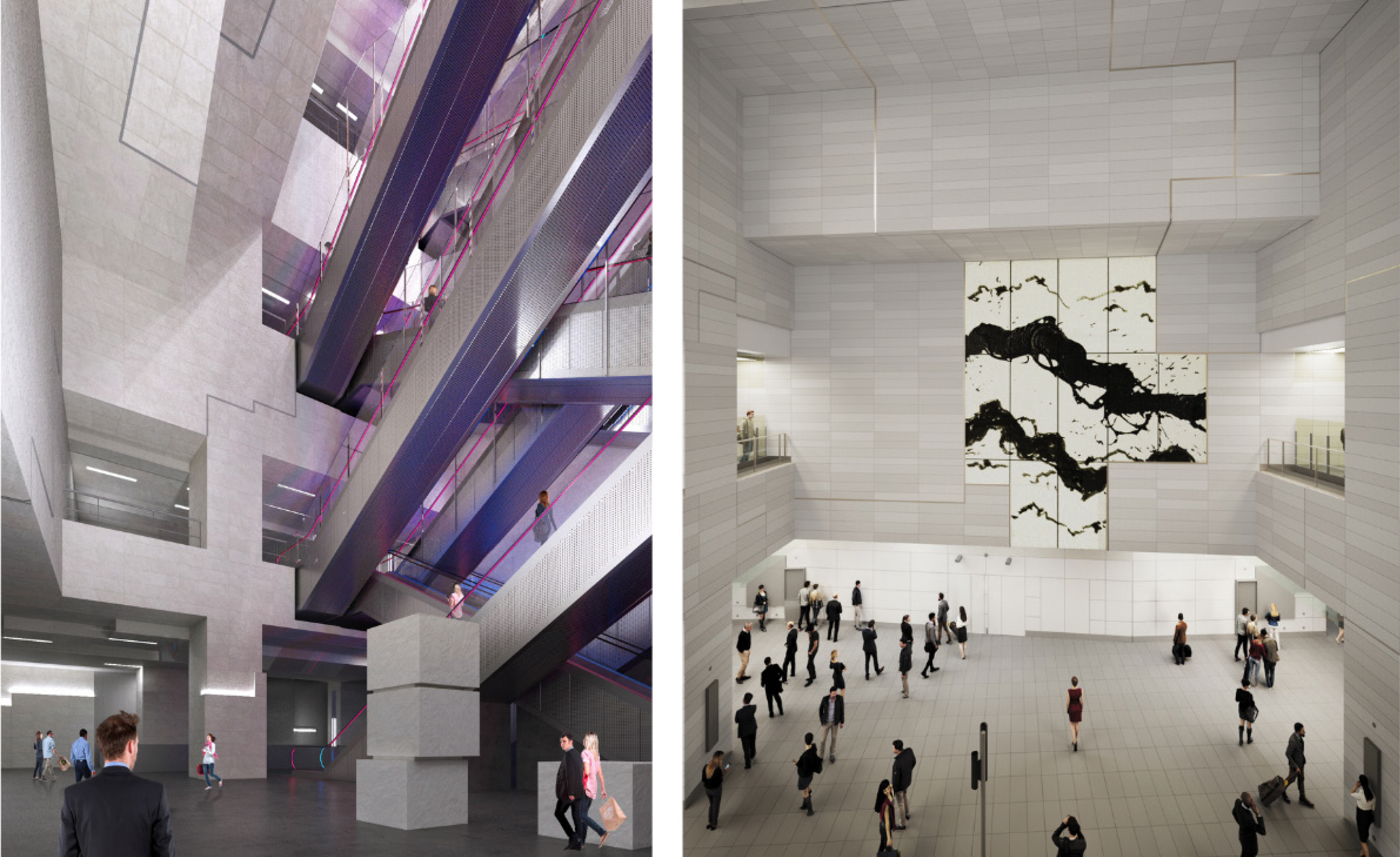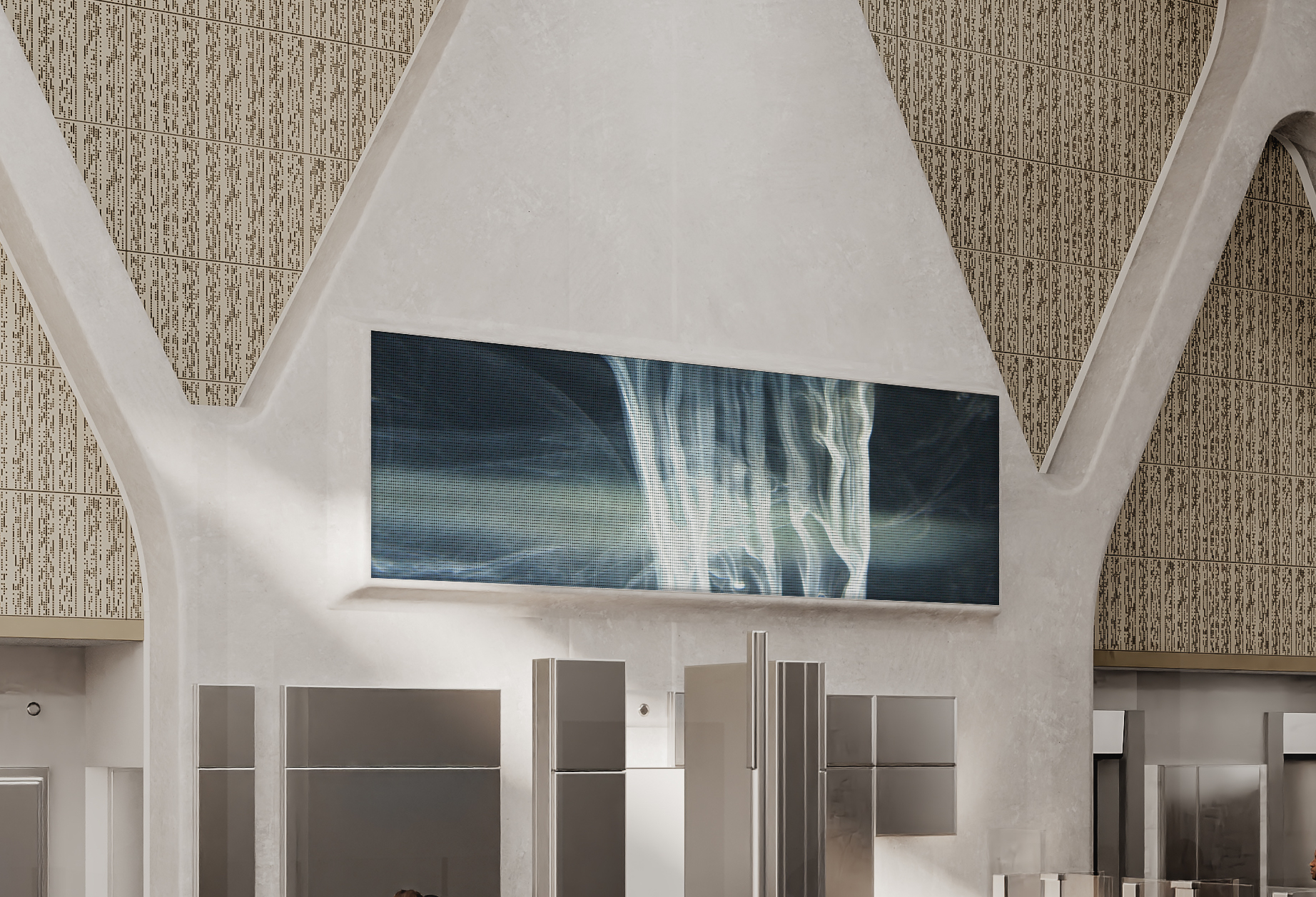
Fabienne Verdier
Conceived as an open window onto the depths of the earth, the artwork will accompany travelers along their path, whether descending to the platforms or rising back up. As they move through the station, they will glimpse an imagined escape, a kind of inner journey through the lines of a geological landscape. Between quarry and horizon, between the near and the unreachable, the work will open a gateway to a geodynamic elsewhere, inviting the mind to extend the voyage far beyond the physical journey.
“I envisioned a painting as a kind of geological landscape, revealed within this architecture conceived as a quarry.”
— Fabienne Verdier
•
«TANDEMS, Artistes et Architectes» est un proiet de la Société du Grand Paris conçu et mis en œuvre par la direction artistique et culturelle du Grand Paris Express menée par José-Manuel Gonçalves avec le 104Paris, Manifesto et l‘agence Eva Albarran. Tandems assure la coordination artistique de la conception des œuvres d‘art pérennes dans les futures gares du Grand Paris Express.
Born in 1962 in Paris. Lives and works in Hédouville.
A graduate of the École des Beaux-Arts de Toulouse in 1983, Fabienne Verdier continued her studies in China, where she trained—within the unique post-Cultural Revolution context—under the last masters of the Sichuan Fine Arts Institute in Chongqing, a prestigious university from which she became the first foreign graduate in 1989. Serving as Cultural Attaché at the French Embassy in China for two years, she drew from this decade-long experience the book Passagère du silence (Passenger of Silence), translated into six languages. More importantly, she discovered a lifelong fascination with the calligraphy brush, an emblematic tool that she boldly reinterpreted and magnified in her own artistic practice.
Through her ongoing research and numerous commissions, Verdier’s work has been enriched by multiple aesthetic movements—from the Italian Quattrocento and Flemish Primitives to Abstract Expressionism and American Minimalism—as well as by a wide range of artistic practices. Today, Fabienne Verdier stands as an internationally renowned artist; her works are held in many public and private collections, including the Centre Pompidou, Musée Cernuschi (Paris), Kunsthaus Zürich, Pinakothek der Moderne (Munich), Hong Kong City Hall, and the Pinault Collection.
